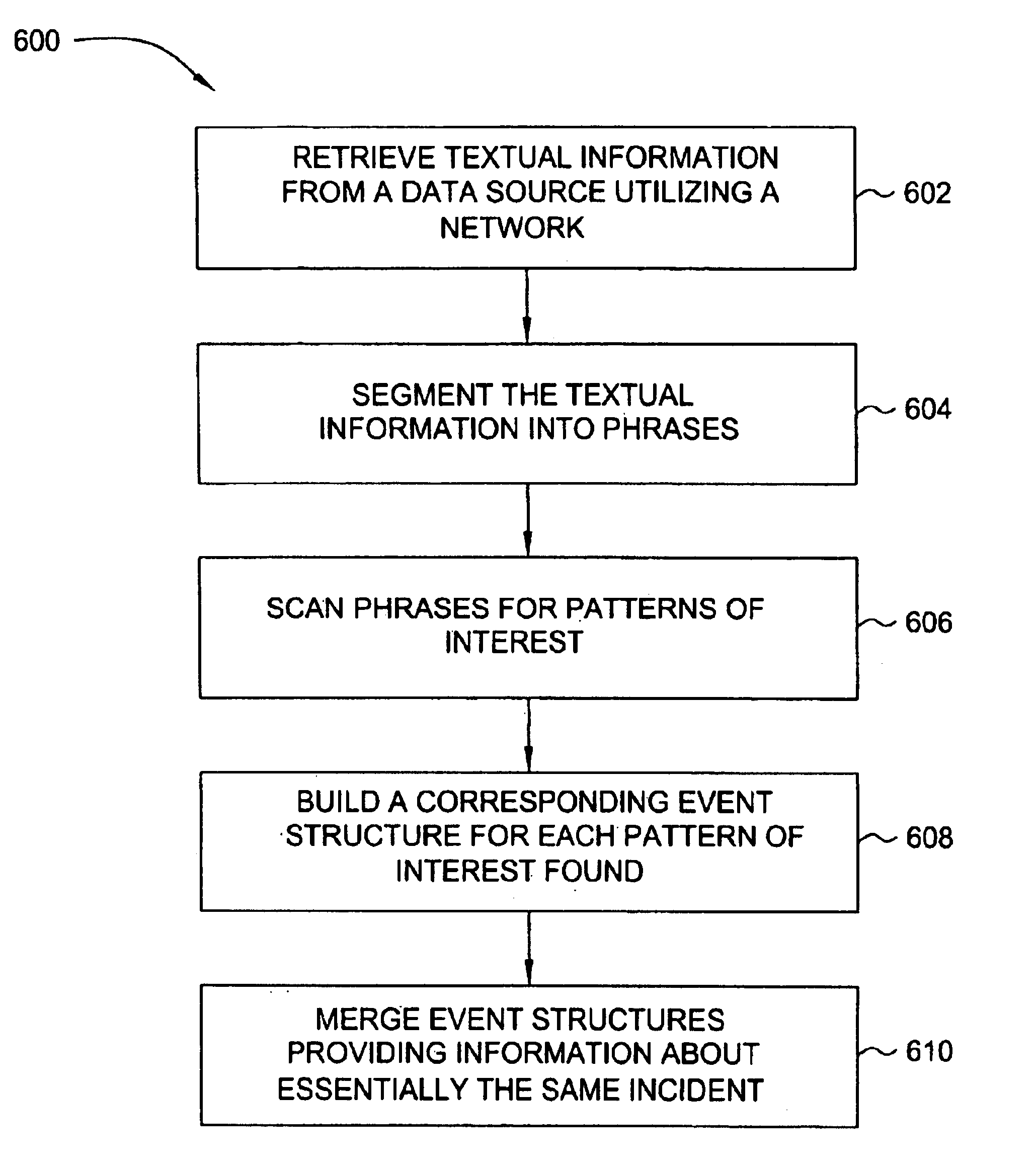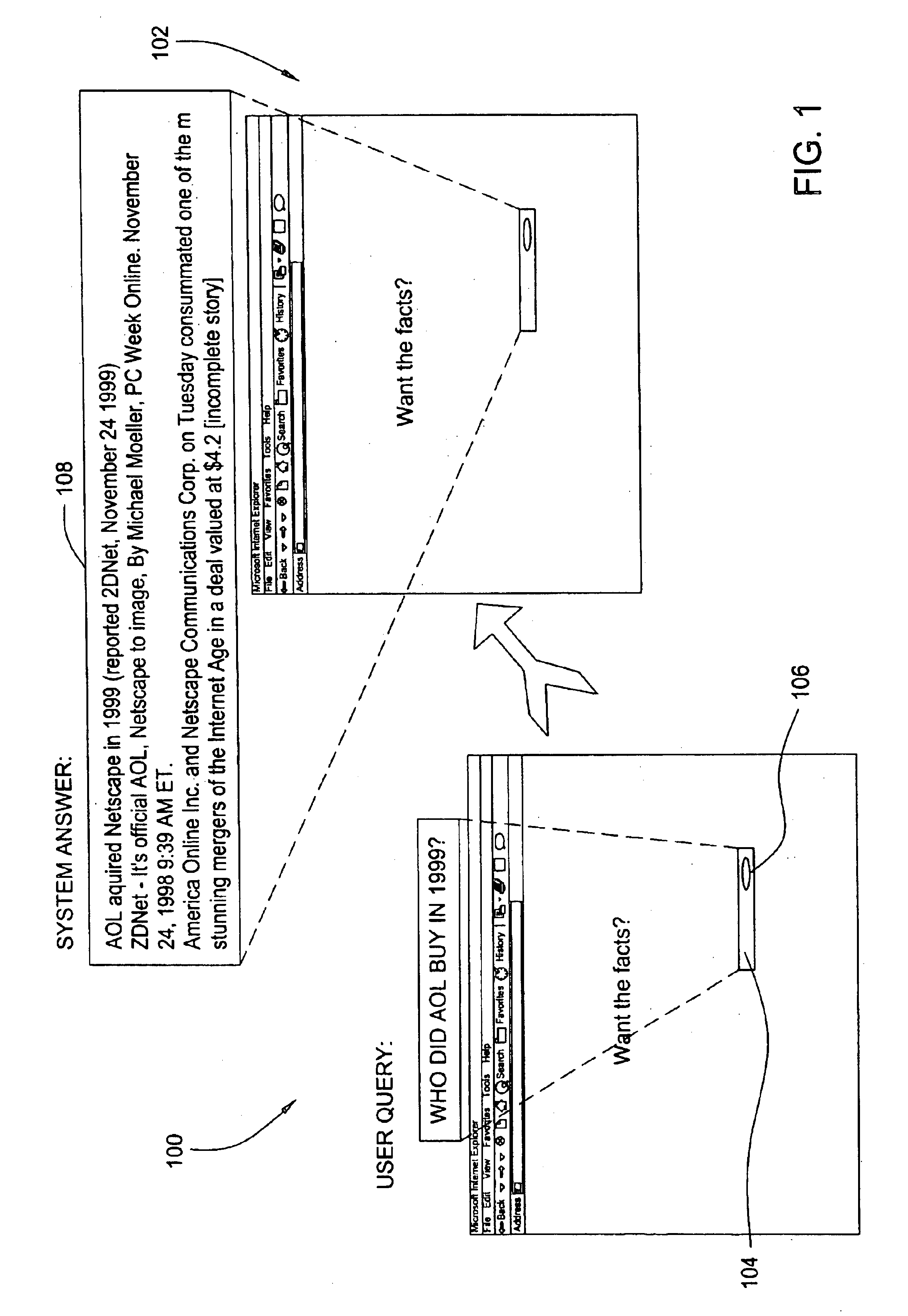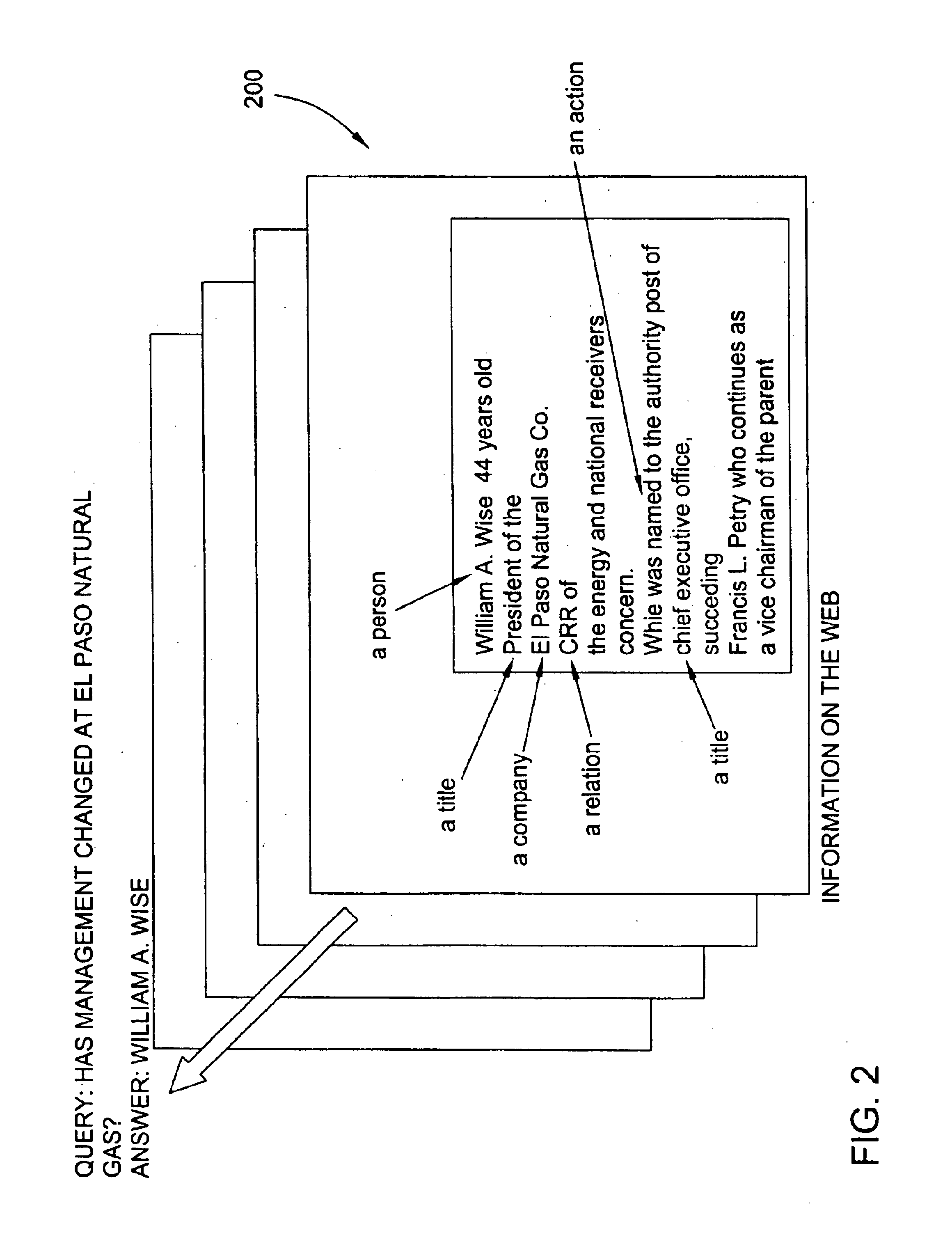System and method for incorporating concept-based retrieval within boolean search engines
a concept-based retrieval and search engine technology, applied in the field of system and method for incorporating concept-based retrieval within boolean search engines, can solve the problems of system which employs domain independent chunking, difficult to square aims, and rarely sentences of dialogue utterances
- Summary
- Abstract
- Description
- Claims
- Application Information
AI Technical Summary
Benefits of technology
Problems solved by technology
Method used
Image
Examples
Embodiment Construction
==>TERM1
LOOKAHEAD TERM==>`END OF INPUT`
The hash marks specify that TERM 1 is to be matched but not consumed. This gives us one-symbol look-ahead or look-back. Its use is discouraged.
If START-OF-INPUT END-OF-INPUT is specified, then there must be no more symbols in the input.
TERM==>TERM `*` zero or more occurrences
TERM==>TERM `+` one or more occurrences
TERM==>`{`TERM+{`1` TERM+}*,}, grouping with possible alternatives
TERM==>,(`TERM+{`1` TERM+}*,)` optional grouping with possible alternatives
TERM==>,` optional sequence macro
The expression is equivalent to
{TERM1 (TERM2) . . . (TERMn) I TERM2 (TERM3) . . . (TERMn) I . . . I TERMn}
TERM==>TERM `:` label
a label must be an integer (This is a new restriction)
label==>integer >0
Labels are used by semantics to refer to input objects when the reference to them by category would be ambiguous. They are also used to refer to nonatomic terms, such as alternations. When a label is applied to an alternation, the label refers to the LAST constituent o...
PUM
 Login to View More
Login to View More Abstract
Description
Claims
Application Information
 Login to View More
Login to View More - R&D
- Intellectual Property
- Life Sciences
- Materials
- Tech Scout
- Unparalleled Data Quality
- Higher Quality Content
- 60% Fewer Hallucinations
Browse by: Latest US Patents, China's latest patents, Technical Efficacy Thesaurus, Application Domain, Technology Topic, Popular Technical Reports.
© 2025 PatSnap. All rights reserved.Legal|Privacy policy|Modern Slavery Act Transparency Statement|Sitemap|About US| Contact US: help@patsnap.com



